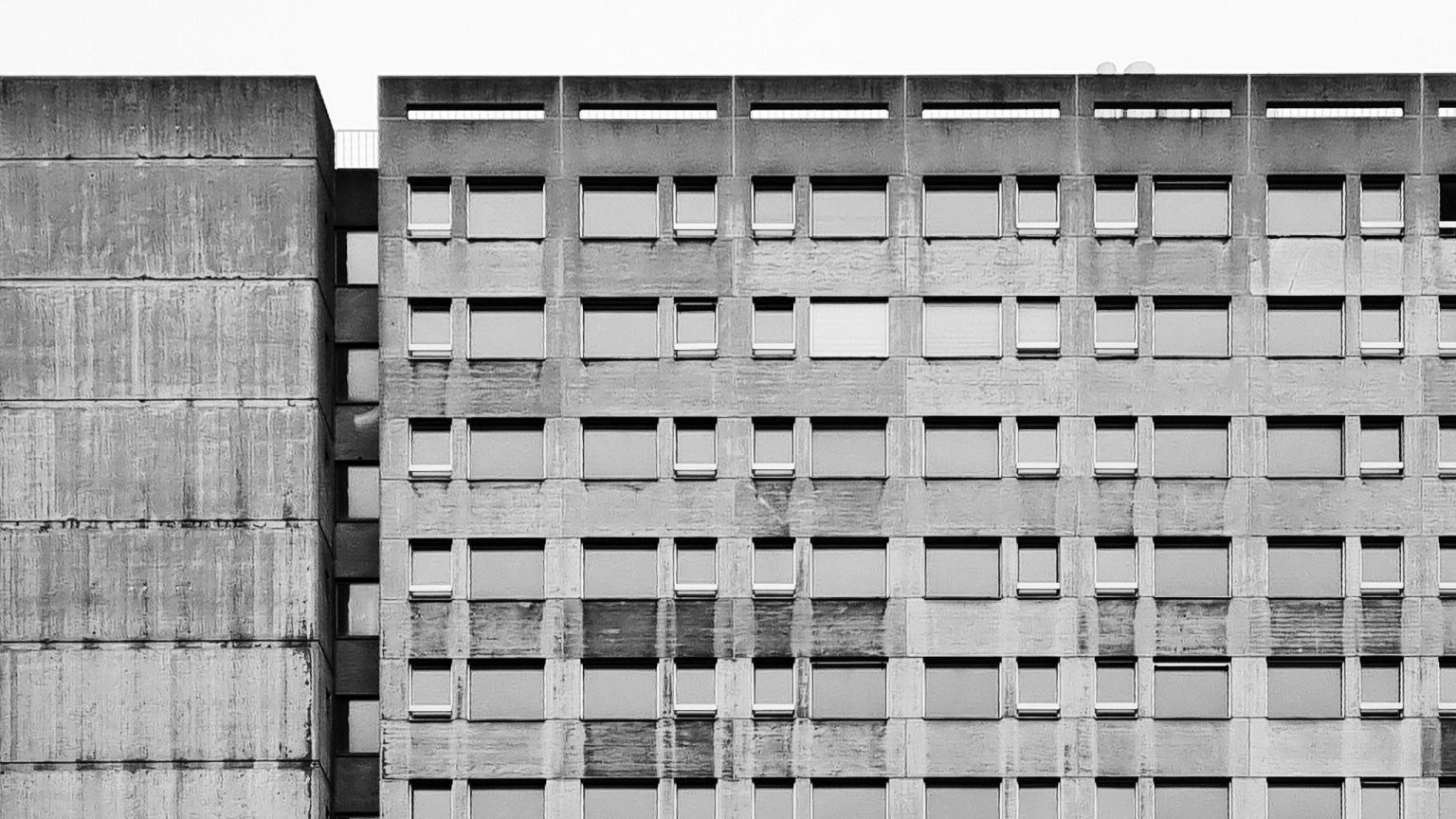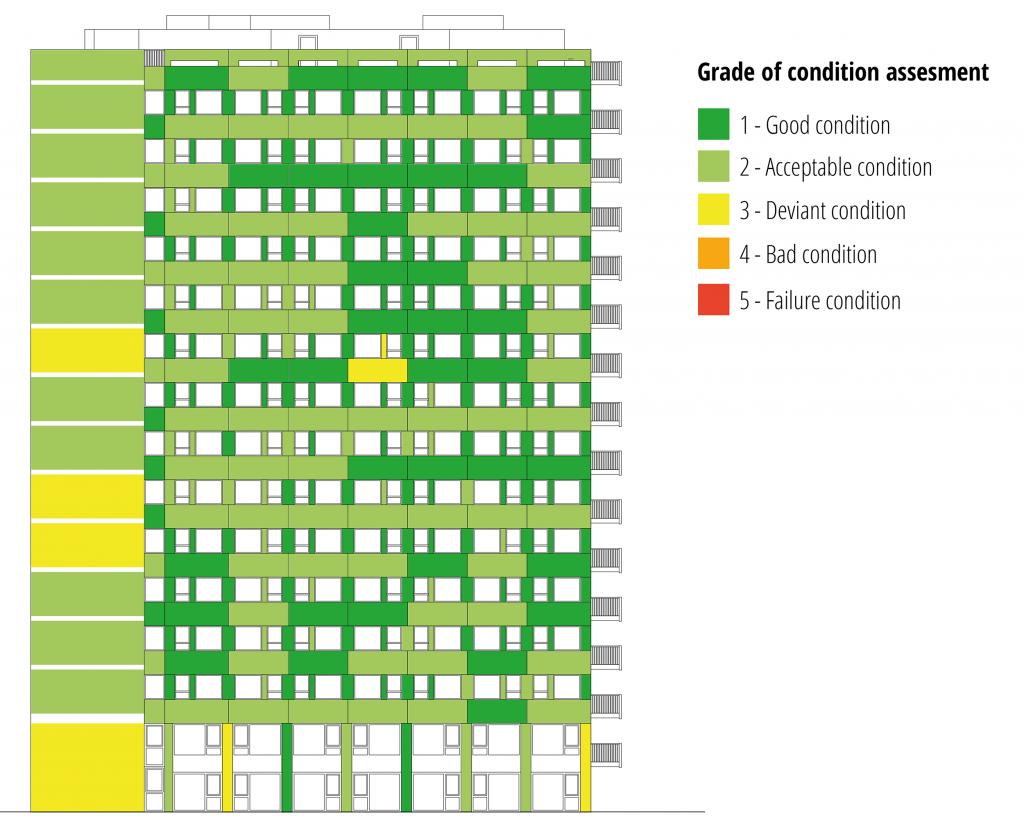on-site assessment

Facade of the Zürich Stadtspital Triemli Personalhäuser. Resource assessment with Zirkular.
Please note that the publication lists from Infoscience integrated into the EPFL website, lab or people pages are frozen following the launch of the new version of platform. The owners of these pages are invited to recreate their publication list from Infoscience. For any assistance, please consult the Infoscience help or contact support.
Zürich Stadtspital Triemli Personalhäuser – Resource assessment of structural elements
The Triemli Personalhäuser are three equal 15-story buildings located on the Zürich Triemli Stadtspital campus and erected between 1964 and 1969. Cast-in-place reinforced concrete (RC) slabs and walls form the building cores and their surrounding corridors. The rooms are arranged around these cores. The load-bearing intermediate walls, made of prefabricated masonry, support thin precast slabs used as permanent forms. A RC layer is cast over these precast slabs and connects the room slabs with the cast-in-place slabs of the corridors and cores. The self-supporting facade consists of precast RC panels. The City of Zürich plans the deconstruction of these three buildings, thus making available a large amount of RC elements composing the structure and the facades of these buildings.
Little-known and rarely implemented, the reuse of concrete elements from obsolete buildings in new projects is a sustainable approach that promotes a circular economy. When reusing, the components of obsolete buildings are carefully dismantled without being crushed. They are then cleaned, possibly repaired or trimmed, and reused without many transformations in a new project, maintaining their shapes, technologies, and mechanical properties. In addition to maintaining the embodied energy and history of the reused components, reuse allows the construction industry to reduce demolition waste, greenhouse gas emissions, and material consumption.
This report is a preliminary resource assessment and aims at inventorying and assessing all structural elements of the Triemli Personalhäuser, focusing on their potential value for reuse. Both precast and cast-in-place RC elements are included. They are part of the load-bearing structure or are self-supporting such as the precast facade elements. The proposed methodology allows identifying all properties needed to evaluate the potential for reuse of an element: geometry, material properties, current condition, aesthetics, accessibility, resistance, future durability and environmental impacts. After reviewing available reports and drawings on the buildings, onsite visits are carried out to complete the information and visually inspect the structural elements. During the inspection, the elements are assessed with regards to their suitability for reuse and their condition is classified into a five-grade scale. The investigations are completed with destructive and non-destructive testing of the material properties.
Together, Buildings A, B and C are made up of approximately 7 000 m3 of materials constituting their load-bearing system, with approximately 2 500 m3 of precast concrete, 3 400 m3 of cast-in-place concrete and 1 100 m3 of masonry. Of this total, approximately 4% of the volume is dropped from the analysis due to the bad condition of the elements, namely the balcony slabs, the roof slab, and the external stairs. The other elements are in a good or acceptable condition and ae inventoried and analysed in detail.
The inventoried elements are divided into 5 categories: (1) facade elements; (2) slab elements; (3) wall elements; (4) column elements; and (5) staircases. Each of these categories are subdivided into a certain number of element types for which a complete factsheet is prepared, including pictures, drawings and useful information on their condition. The volume and weight of each element types are given, as well as their share of the total material volume. The embodied global warming potential (in kgCO2eq) for fabrication and demolition of the elements is also calculated. The results of the investigation on material properties confirm sufficient compressive strength for all elements. The carbonation depths measured on the cores are lower than the cover thickness of the reinforcement. Thus, the concrete is not carbonated in the reinforcement areas and the risk of corrosion is kept low, insuring a good durability of the elements.
This document should serve as a base for designing and planning future reuse applications for the concrete elements extracted when deconstructing the Triemli Personalhäuser. The information presented here will help the planners to prioritize the reuse strategy on the elements in the best conditions, with the largest volume share and thus with the largest embodied global warming potential.
2022
p. 90.
In collaboration with Charlotte Bofinger and Kerstin Müller from Zirkular.
Work in progress.
Contact: Maléna Bastien-Masse & Julie Devènes